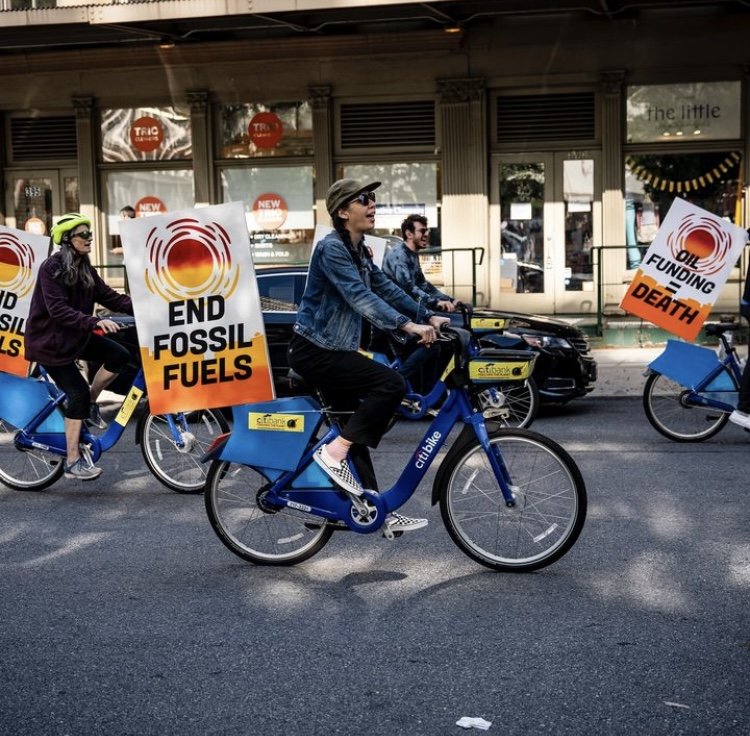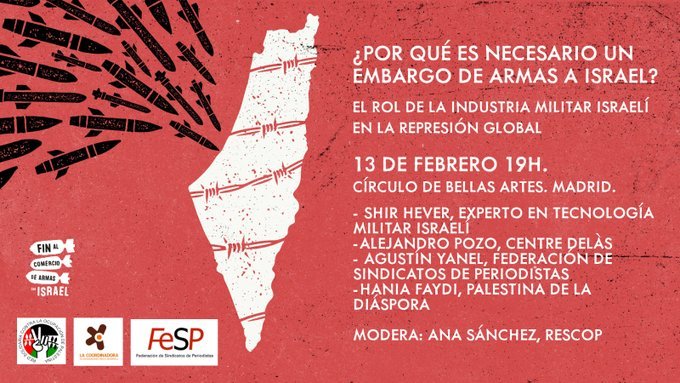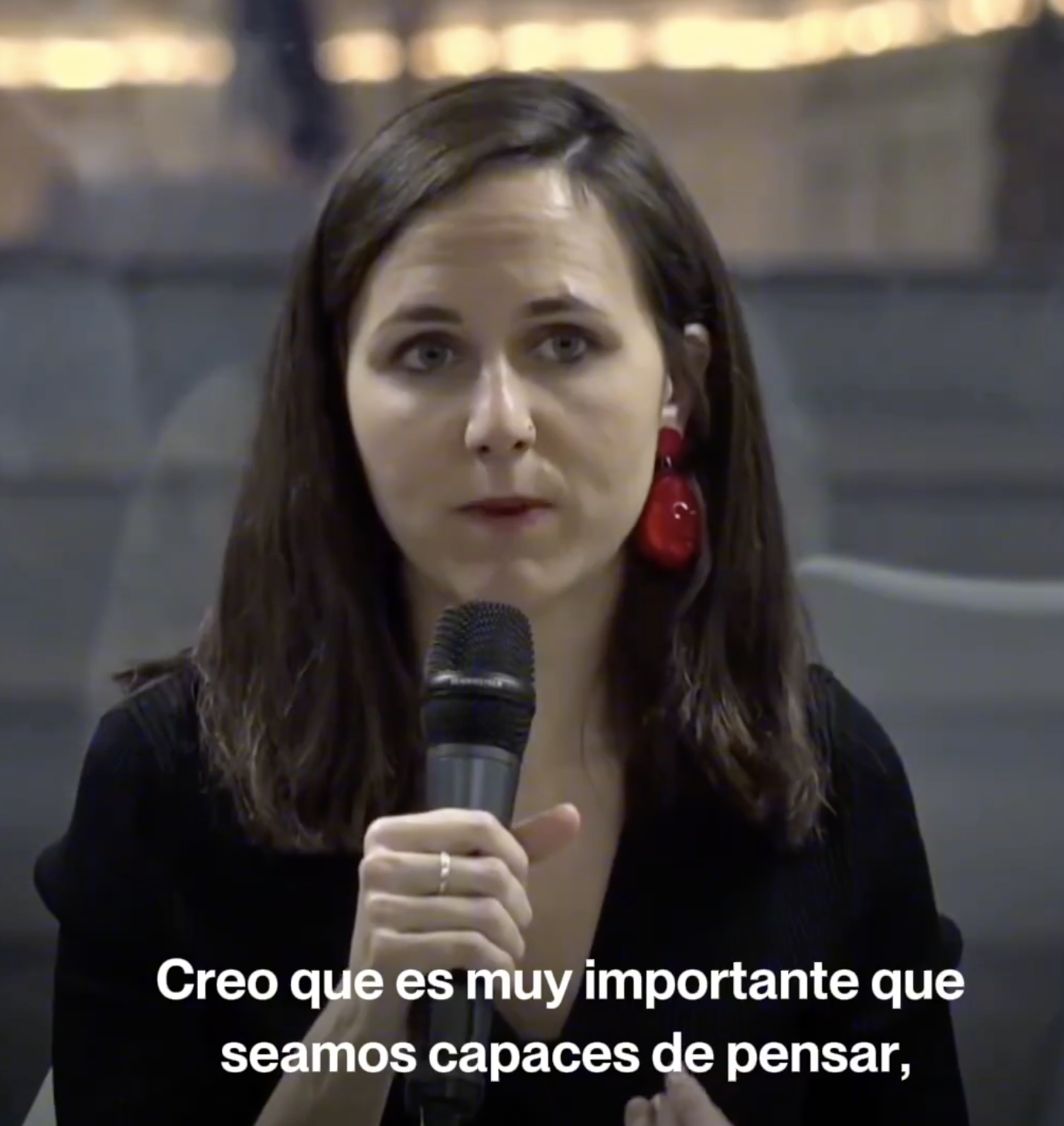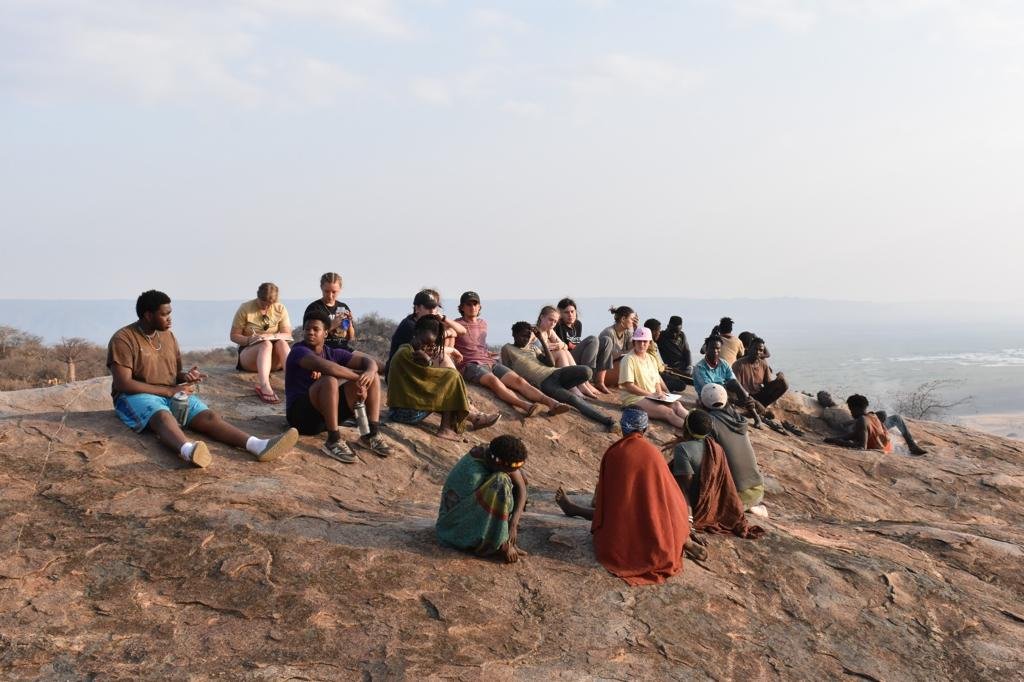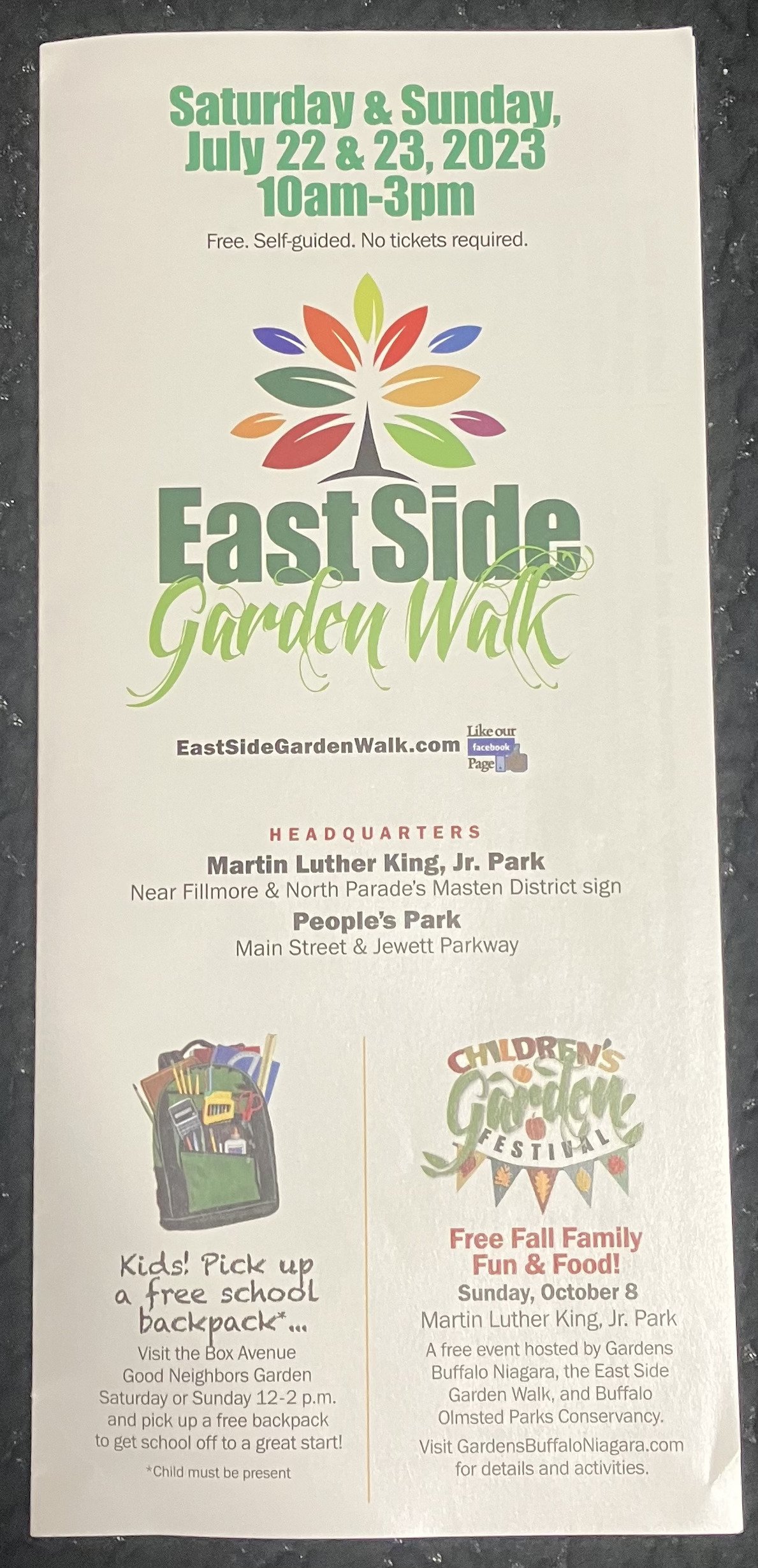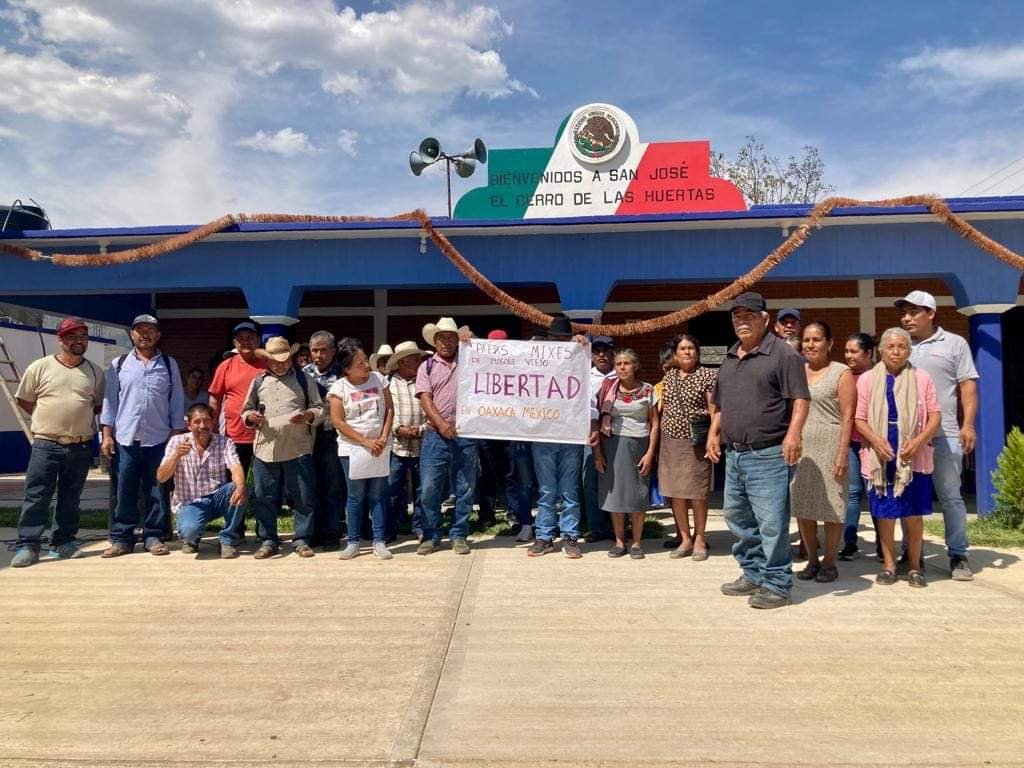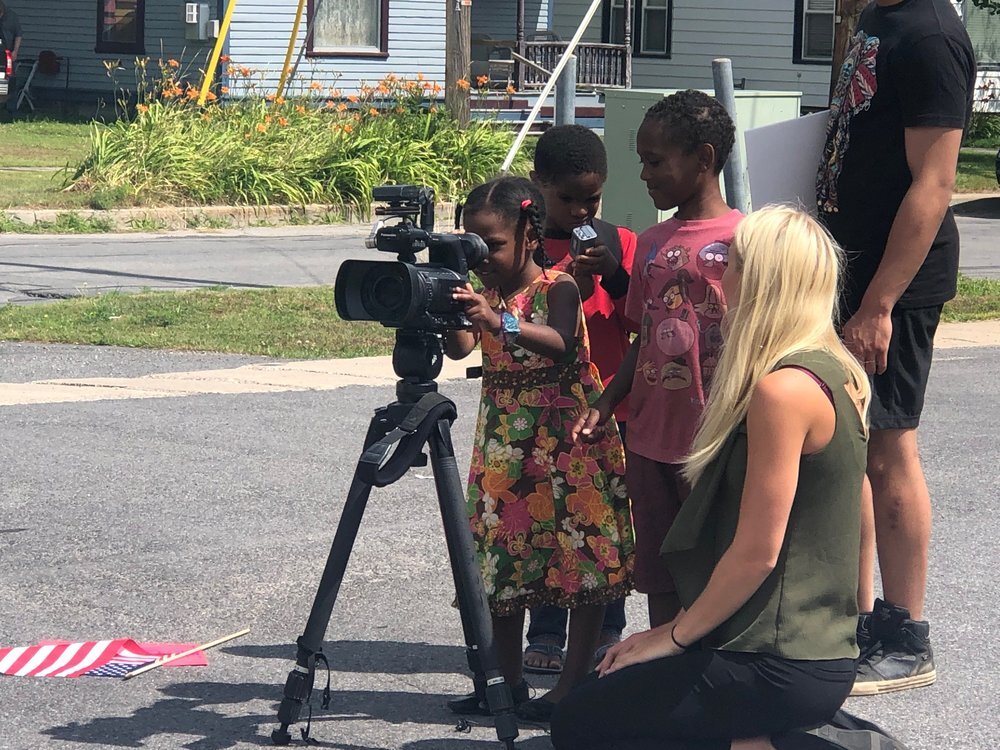
Stories
News

Analysis
Voices
Podcast
Announcements
Events
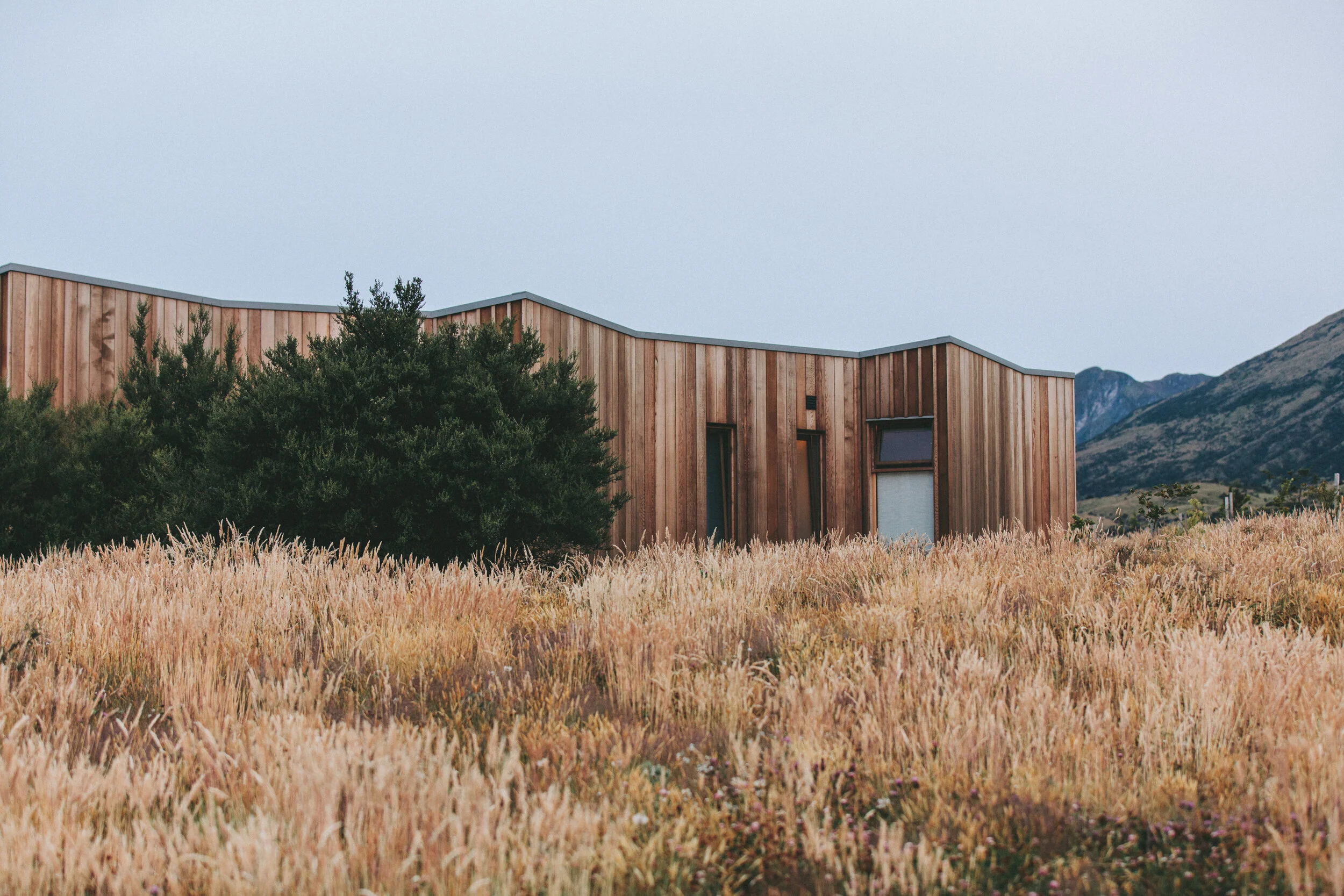
All Stories
“Make Art”: An Interview With Savior El Mundo
In my first Weaving the Streets installment, I described how my interest in street art was born as a child in Mexico, and I focused on the artist Amanda Phingbodhipakkiya and her installation “We are More” in New York City. I am very excited about this second article because I was lucky enough to interview a street artist myself and learn about street art in NYC and the community of street artists first-hand. For this article, I will be featuring Savior El Mundo, a street artist, but also a dancer, curator, and more, who shared with me his own journey as an artist born and raised in New York City.
Climate Justice Now! Spaniards Demand Decarbonization at Madrid March
“De norte al sur, de este al oeste, la lucha sigue, cueste lo que cueste! (From north to south, from east to west, the struggle continues, whatever it takes!)” With this and other slogans ringing in the air, hundreds of activists of all ages filled the streets of downtown Madrid, Spain, on September 15 to demand rapid decarbonization and climate justice. At a time when news reports here are filled with stories of floods, fires, and killer storms throughout the wider Mediterranean region, Madrid’s 15S Climate March provided a much-needed dose of what is usually missing from those reports: a clear-eyed look at the policy steps that must be taken in order to face down our climate crisis.
The Impact of Climate Change on North Country Farmers
“I am not optimistic. I think it will get harder and harder.” This was St. Lawrence County (NY) farmer Dan Kent’s response when asked how climate change will impact local farmers in the years to come. Localized farming practices have both economic and environmental advantages for the North Country. But with warming temperatures and varying weather patterns, local farmers in the region will need to find ways to adapt in order to maintain their livelihoods and retain the benefits of local food systems.
Flowers of Buffalo: Abra Lee and Gardeners in Black History
On Thursday, July 20, 2023, Abra Lee, ornamental horticulturalist and Black historian, presented research from her forthcoming monograph, “Conquer the Soil.” This public lecture inaugurated the 2023 Garden Walk series of events, coordinated by Gardens Buffalo Niagara, which includes the East Side Garden Walk, on July 22-23, 2023, and the Buffalo Garden Walk, on July 29-30, 2023. In other words, Buffalo has a two-week flower festival – and Abra Lee got us started.
Flowers of Buffalo: East Side Garden Walk Brochure
The East Side Garden Walk brochure strikes me as a rich primary source on cultural politics, nonprofit orientation, and community power in Buffalo. I’m a historian, so I imagine this brochure being useful to a young scholar in 2050, when she’s trying to understand how the Buffalo Renaissance of the early 2000s transitioned into the re-urbanization of the city.
Interweaving With Gail Wells
Ms. Gail Wells is Founder of Buffalo Freedom Gardens and a Project Consultant for Grassroots Gardens of Buffalo. Founded in 2020, Buffalo Freedom Gardens has two aims, first, to help residents create sustainable food sources on the East Side of Buffalo through urban farming and, second, to bring the vibrancy of horticulture to urban spaces. Between 2020 and 2021, Ms. Wells and Buffalo Freedom Gardens helped more than 80 residents start gardening – front-yard, backyard, raised bed, and container gardens – to feed their households and beautify their homes.
Interweaving With Sara E. Jablonski
Sara E. Jablonski is a 4-H Team Educator in the Cornell Cooperative Extension Erie County. She develops 4-H Youth Development clubs in the Buffalo, NY, and Amherst, NY, areas. She helps young people find their spark! She is one of my colleagues at Cornell in Buffalo, and she was kind enough to share with Weave News the work she does in the community and the flowers that she admires in Buffalo.
Flowers of Buffalo: Flowers in the City
I’ve lived in a city most of my life. Save 5 years in Canton, NY, as a St. Lawrence student, I have lived in either New York City (21 years) or City of Buffalo (16 years). I’m a city creature, ranging through one or another major city. Flowers and gardens have not always been of interest to me. In New York City, I lived close enough to Central Park to enjoy some of nature’s bloom. Three blocks from my railroad apartment in El Barrio was the 97th street entrance to the park. As a teen, it wasn’t the park’s green spaces that attracted me, but the hilly walkways that outlined the grassy field. I blazed those roads with my bike, catching enough speed to soar off short ramps made of broken sidewalk…
Flowers of Buffalo: Videos Are Flowers
I’m a recovering college professor. Teaching is my drug – it gets me high. But these “highs'' never last long, and my addiction was costing years off my life. The problem isn’t teaching; it’s learning – learning is the purpose of teaching, and I cannot tell when, how, or why people learn in college classrooms. So to summarize, since 2007, I have been getting high off teaching, leading history classes at two different universities, and sharing my expertise with more than 1500 students until I resigned in 2023. In that period, I’ve struggled with anxiety and depression, I’ve fought off rashes and infections, and I’ve been hospitalized for stress-related conditions afflicting my heart, arms, and brain. Getting high on the job was killing me.
Flowers of Buffalo: In Search of Eden
On Friday, June 23, I joined the Fellows on two tours, one of the People United for Sustainable Housing (PUSH-Buffalo) Green Economic Development Zone and another of an urban farm administered by Massachusetts Avenue Project (MAP). On both tours, I was chasing flowers with my phone – I’m obsessed. But I found much more than flower pictures. I found myself on the grassroots, too, a drop of dew shimmering in sight of Eden.
Flowers of Buffalo: Roses, Peonies, and Blooms
One April morning in 2021, I snapped a cell phone picture of a peony that was growing outside my mom’s house in Amherst, New York, a suburb of Buffalo. It was toward the end of the COVID pandemic. The term “new normal” was all the rage. I didn’t know it, then, but I was searching for love, and I had found it. This morning, the sun was beaming; the flowers were stretching for sunlight; and I was falling head over heels for the flowers of Buffalo.
Artsakh: The Burdens of Healing (Short Documentary)
Weave News is pleased to present this short documentary by Taline Norsigian, a young artist and filmmaker who has previously worked as an intern with our organization. The film was produced in 2022-2023 as part of an independent study project at St. Lawrence University under the supervision of Dr. John Collins. It was released by Hay Hokee Films in 2023.
We Are Not Powerless: Advocating For Clean Water and the Rights of Rivers
Recently, wildfire smoke darkened our skies in northern New York, making being outside unpleasant to downright unhealthy. We experienced what it’s like when something fundamental that we take for granted, such as clean air, isn’t available. Here in the North Country, far from big cities, we expect clean air; yet we were powerless to do anything about the air pollution we were suddenly suffering. Clean water is also fundamental to our well-being. We expect our waterways to be clean and healthy, but clean water is under threat from pollution.
Cirio Ruiz Gonzalez
To know Cirio Ruiz is to know the history of CORECAFECO. He has been part of this council for approximately 40 years. What is CORECAFECO? It is the Coatepec Regional Coffee Council. It is an organization that strives for dignified and fair treatment for coffee workers accomplished through community organization and clean processes, the production of coffee free of agrochemicals. They fight for fairer prices, valuing human and environmental life, taking care of biodiversity and ensuring that the land and water remain healthy.
Resistiendo “Proyectos de Muerte”: Entrevista con Carlos Beas Torres
Aquí presentamos una entrevista con Carlos Beas Torres de la Unión de Comunidades Indígenas de la Zona Nortel del Istmo de Tehuantepec (UCIZONI), una organización que ha resistido a CIIT desde su inicio, y que forma parte de la caravana “El Sur Resiste.”
Resisting “Death Projects”: An Interview With Carlos Beas Torres
The following is an interview with Carlos Beas Torres, a member of the Unión de Comunidades Indígenas de la Zona Nortel del Istmo de Tehuantepec (Union of Indigenous Communities from the North of the Isthmus or UCIZONIT), an organization that has resisted the CIIT since its conception and forms part of the “El Sur Resiste” (The South Resists) Caravan.
Alert: Repression and Eviction of the “El Sur Resiste” (The South Resists) Caravan in Guichicovi, Oaxaca
Translation of a statement issued on April 28 by the National and International Caravan “El Sur Resiste” (The South Resists) regarding the repression and eviction of the "Tierra y Libertad" (Land and Liberty) protest camp, which was located in the Mogoñe Viejo community, Huichicovi, Oaxaca. Mexico. Read the original Spanish statement.
Incendiary Commentary: The Ninots of Las Fallas, Valencia
A fiery tradition in Valencia, Spain, called Las Fallas is held annually from March 1 to 19. Festivities happen throughout the day and night, including firework shows like the grandiose and explosive Nit del Foc on March 18, which uses between two to 4.5 tons of gunpowder, and parades such as La Ofrenda and Mascleta. On March 19, the burning of freestanding doll-like figures called ninots, La Cremà, makes the city a chaotic playground that reflects upon social and political realities of the day.
“We’re trying to move a society”: Speaking Up For the Rights of Rivers in the North Country
“Rivers keep us alive and keep so many other living beings alive.” With those words, Blake Lavia, the President of Talking Rivers, welcomed more than 30 North Country community members to a wide-ranging discussion on a revolutionary idea: the Rights of Rivers. Held at Clarkson University on Earth Day (April 22), the event showcased the local and global momentum behind the idea as well as some of the key challenges facing those who would like the Rights of Rivers to become law across the St. Lawrence River / Kaniatarowanénhne and Adirondack Watersheds.








